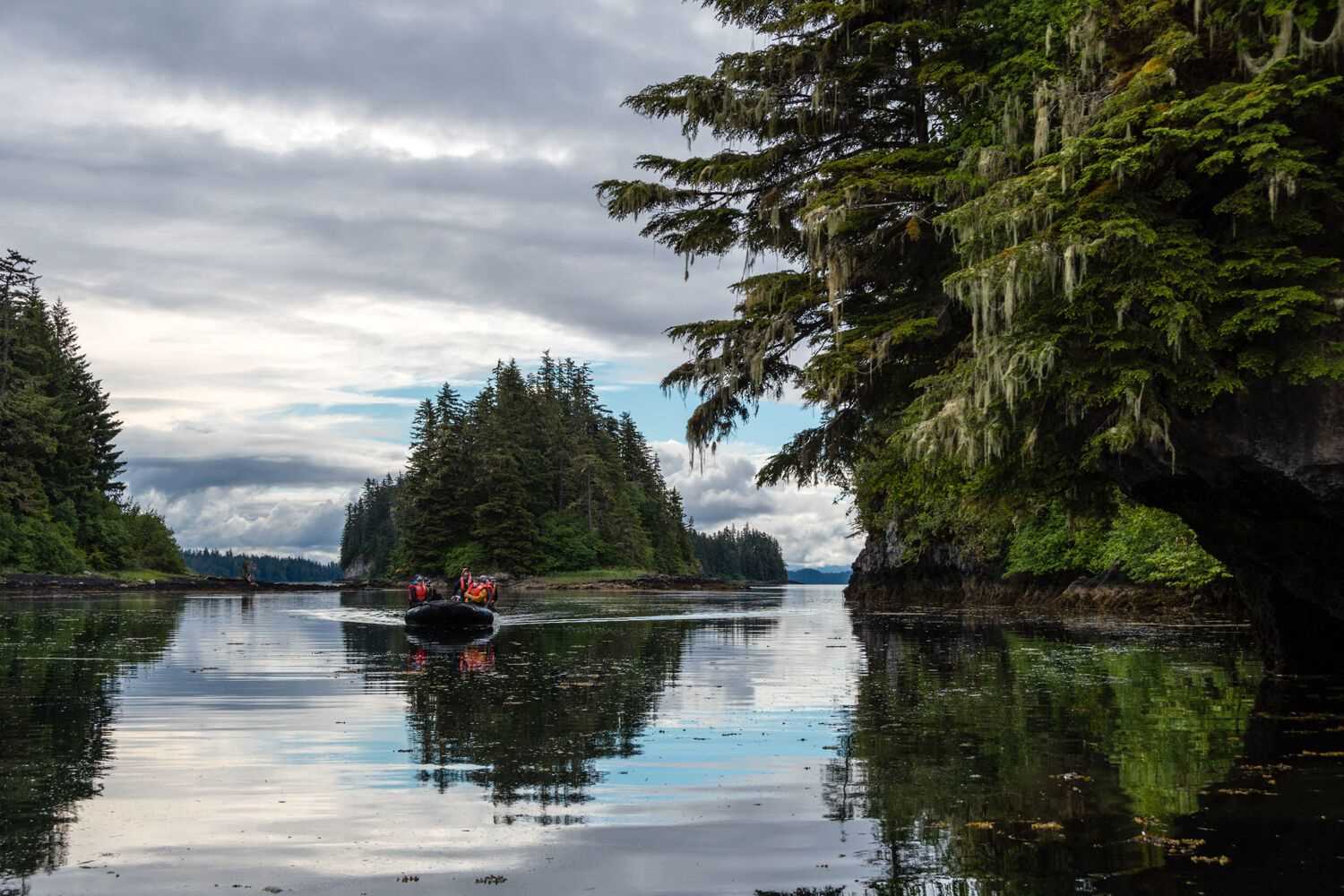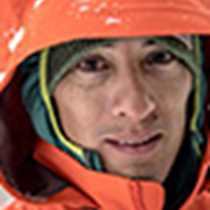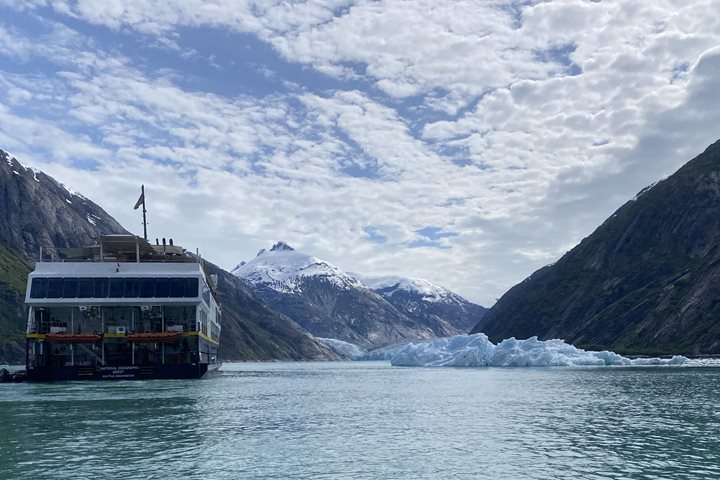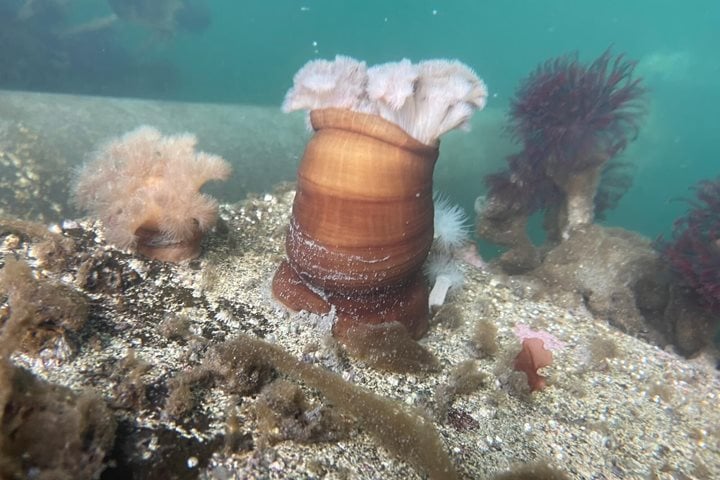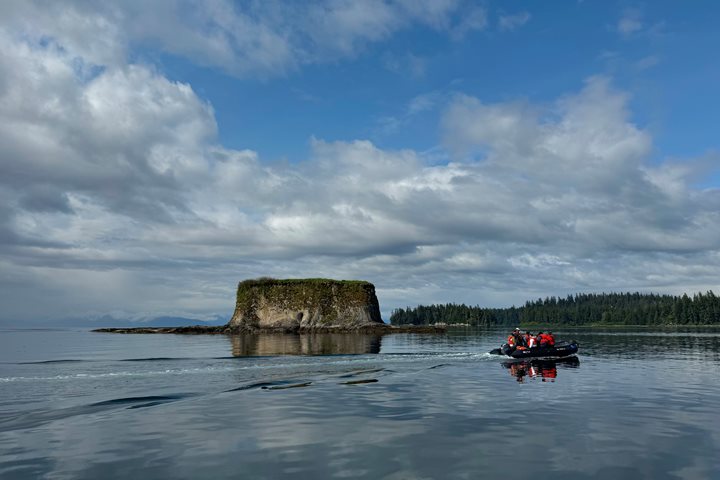The Keku archipelago is full of life, and we found all manner of excitement during our morning exploring these islands in our expedition Zodiacs. Marbled murrelets, belted kingfishers, pigeon guillemots, and bald eagles flew nearby as we poked our noses into all the nooks and crannies of the islands covered in forest and flowers. Jellies and pteropods floated through the kelp forest while sea otters and harbor seals bobbed around nearby, but the humpback whales gorging themselves on bait balls just offshore truly stole the show. It was truly a case of not knowing where to look, but not really caring because there was something magical to see in every direction! After lunch, some of our more daring guests went for a dip in the chilly waters before we started heading out to Frederick Sound where we may have had the highlight of the day: we found some northern resident killer whales from the R5 matriline! We watched this family group for a while before going our separate ways in the peaceful, flat, calm waters.
Call +1.800.397.3348 or contact your travel advisor

